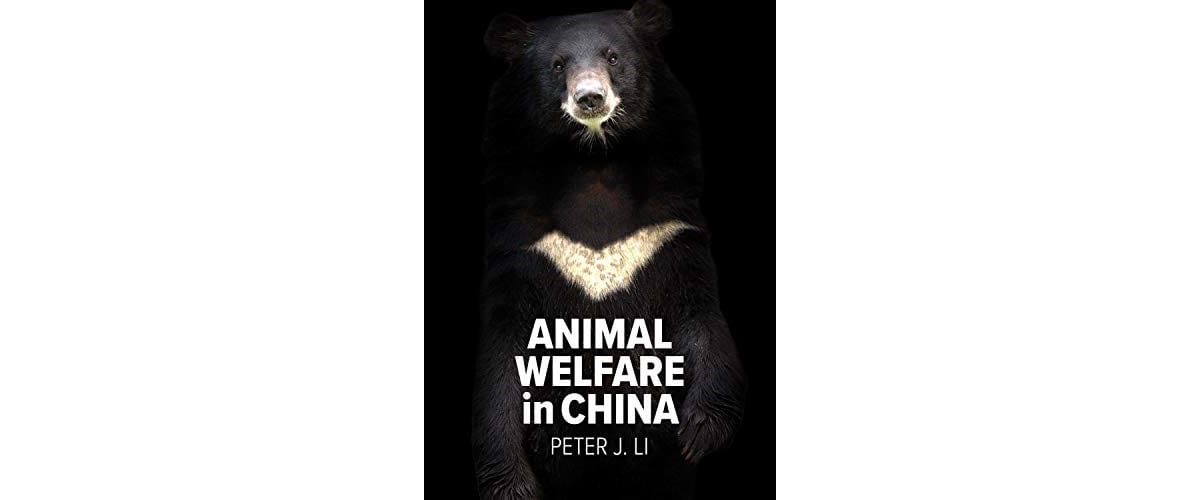
Apr 16, 2021 Animal Welfare in China by Peter J. Li
Congratulations to Peter Li for this comprehensive, well researched book on the history and present-day attitudes and behavior towards animals in China. As a Chinese native living in Europe and, having worked both in grassroots and international non-profit organizations, I have heard so many times of the ‘inherent cruelty to animals that is embedded in the Chinese culture’. These opinions imply that the Chinese people are abusive towards animals because it is in their DNA to act that way!
This book clearly explains how this perceived impression can be challenged. While there may well have been cases of animal cruelty and abuse in China throughout time, sadly this also applies to the attitudes and behavior in most other countries. Meanwhile, there is evidence that, prior to 1949 when the China Communist Party (CCP) took control in China, consideration for the needs of animals was a part of everyday life and the meaning of such modern-day concepts as the Five Freedoms, was largely understood.
Li notes that, in the early 1930s, the Chinese government launched a campaign known as the New Life Movement which aimed to create a modern Chinese culture that converged with the progress of civilization elsewhere in the world. Care for animals and the provision of basic welfare conditions for farm and working animals were two of the objectives of this social transformation effort.
However, when the China Communist Party (CCP) came to power in 1949, such reforms and consideration for animals were dropped. The statement by Li that states ‘Pet keeping is a taboo for China’s Communist leaders’ is the key to an understanding of animal issues in contemporary China. Li also notes that, at the time of writing the book, he had never seen a photograph of a Chinese Communist leader holding or walking with a pet dog. In contrast, there are numerous references to ancient Chinese rulers openly showing love and care for their pets.
The 1959-1962 nationwide famine, caused by unsuccessful economic policies, resulted in enormous hardship for human lives. Citizens were forced to scour the mountains and forests for edible plants and animals, desperate to feed their families. (An estimated 30 -50 million people died of starvation in this period.) Such an event will likely still be very real in the minds and memories of Chinese people today and may continue to influence the attitudes of some people towards animals – that for many, animals are simply a food source.
Li gives vivid descriptions of the plight of animals in agriculture today, highlighting how factory farming techniques learned from western countries are having a detrimental effect on the lives of billions of such animals. Unfortunately, there is no legislation or enforcement in place to provide protection to these animals.
Nevertheless, it is encouraging, as Li notes, that there have been some legislative reforms recently relating to animal use in laboratories and to the treatment of wildlife. But there is still much to be done before such legislation is ‘fit for purpose.’ I have also observed such changes in legislation during my own work within China over the last two decades.
Many people reading this book may also be surprised to learn that dog-eating is not a major industry in China and was not practiced during the leadership of Mao Zedong. It has only developed since the 1980s. It is an emotive issue for western countries, where dogs are valued as family members, and has generated sensational media coverage. Li covers this issue in detail, charting the action taken by both international groups and local Chinese advocates.
Having worked in China for some 20 years and helped many pioneering groups build their capacity and credibility, it would have been useful to have had an appendix with a list of pioneering groups in recognition of their courageous animal advocacy. I appreciate it is not possible to mention everyone involved in the movement (several important groups are mentioned in the book) but there are many more individuals and groups. Numerous pioneering animal groups and individual animal advocates are working in China on initiatives dealing with education, training, rescue, and legislation reform with little, if any, mention. Progress seems slow and there are numerous restrictions, so any encouragement would be a significant morale boost.
In recent years, China has embarked on an aggressive global economic plan and the lives of young people today are very different from the lives of their parents and grandparents. Li suggests that those born in the 1980s and 1990s will be less tolerant of cruelty to humans and nonhumans and are less desensitized than their elders. He predicts that China’s future animal advocacy will be rewritten by the younger generations.
Li’s in-depth analysis of animal welfare and its progress in China presents a complex situation given the size of the country and the large human population, tightly controlled by an autocratic government. However, through greater understanding and collaboration with the wider world, we can be all be hopeful of positive change in China over time. I am pleased to see many of Li’s analytical comments mirror ACTAsia’s – Changing China 2011 report.
I recommend this book to anyone interested in China and the numerous animal welfare issues. The book dispels myths and clarifies widely held beliefs relating to historical attitudes and behavior in China. It is an absorbing, well referenced and easy-to-read book which gives a thorough account of animal welfare in China and will be a ‘must have’ textbook for scholars, animal protectionists and those interested in social welfare.
Pei Su is the CEO of ACTAsia, an organization of which she was a co-founder in 2006. ACTAsia has offices in the UK, the Netherlands, the USA, Australia and China. Pei Su has an MA in sociology and, before founding ACTAsia, she worked for five years as the Asia Project Director at the World Society for the Protection of Animals as it was then known.


